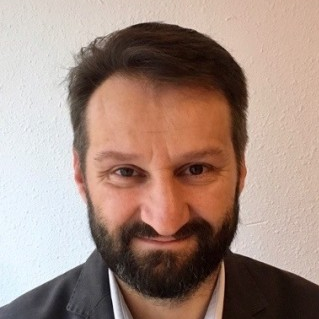Microgrids II
A special issue of Applied Sciences (ISSN 2076-3417). This special issue belongs to the section "Energy Science and Technology".
Deadline for manuscript submissions: closed (1 August 2020) | Viewed by 12881
Special Issue Editors
Interests: grid integration of renewable energy generation; wind power; solar power; energy storage systems; HVDC transmission; microgrids; smart grids; big data for electrical systems
Special Issues, Collections and Topics in MDPI journals
Interests: electrical engineering; energy efficiency; power grid; renewable energy; smart grid; digital energy; artificial intelligence; electric cars charging
Special Issues, Collections and Topics in MDPI journals
Interests: grid integration of renewable energy source; PV power plants, microgrids; multi-microgrids; active distribution networks
Special Issues, Collections and Topics in MDPI journals
Special Issue Information
Dear Colleagues,
The electrical power system is evolving at the generation, transmission, and distribution levels. At the distribution level, small generating and storage units—the so-called distributed energy sources (DER)—are being installed close to consumption sites. The expansion of DER is empowering renewable energy source integration and, as a consequence, new actors are appearing in the electrical system. Among these new actors, a game-changing one is the prosumer, fruit of the behavior transformation of the consumer, who has not only the ability to consume power but also to produce it.
Microgrids can be understood as those DER installations that have the capability to operate grid-connected and grid-isolated. During the last few decades, there has been a significant deployment of microgrids (e.g., in countries like the United States, Switzerland, and Denmark) and a consequent increase in renewable energy generation. This is contributing to the decarbonization of the electrical power system. However, due to the variability and intermittency of renewable sources, it is also leading to larger uncertainty in power systems, which implies a more complex operation and control.
The previous Special Issue on “Microgrids” has been a great success leading to interesting publications with important contributions in this field. Because of this success, the editors would like to re-open the Special Issue, broadening its scope to recent technological developments under research.
Hence, we invite you to contribute to this Special Issue, which includes (but is not limited to) the following topics: power electronics for microgrids, design, operation and control of microgrids, optimal sizing and operation of microgrids, coordinated protection in microgrids, micro and local power markets, interconnection of microgrids, prediction models for microgrid operation and planning, big data and data analytics from microgrid assets, microgrid applications for developing countries.
Dr. Mònica Aragüés-Peñalba
Prof. Dr. Andreas Sumper
Dr. Eduard Bullich-Massagué
Guest Editors
Manuscript Submission Information
Manuscripts should be submitted online at www.mdpi.com by registering and logging in to this website. Once you are registered, click here to go to the submission form. Manuscripts can be submitted until the deadline. All submissions that pass pre-check are peer-reviewed. Accepted papers will be published continuously in the journal (as soon as accepted) and will be listed together on the special issue website. Research articles, review articles as well as short communications are invited. For planned papers, a title and short abstract (about 100 words) can be sent to the Editorial Office for announcement on this website.
Submitted manuscripts should not have been published previously, nor be under consideration for publication elsewhere (except conference proceedings papers). All manuscripts are thoroughly refereed through a single-blind peer-review process. A guide for authors and other relevant information for submission of manuscripts is available on the Instructions for Authors page. Applied Sciences is an international peer-reviewed open access semimonthly journal published by MDPI.
Please visit the Instructions for Authors page before submitting a manuscript. The Article Processing Charge (APC) for publication in this open access journal is 2400 CHF (Swiss Francs). Submitted papers should be well formatted and use good English. Authors may use MDPI's English editing service prior to publication or during author revisions.
Keywords
- microgrids
- distributed energy resources
- micro and local power markets
- power electronics
- optimization
- control
- energy storage systems
- big data
- machine learning







